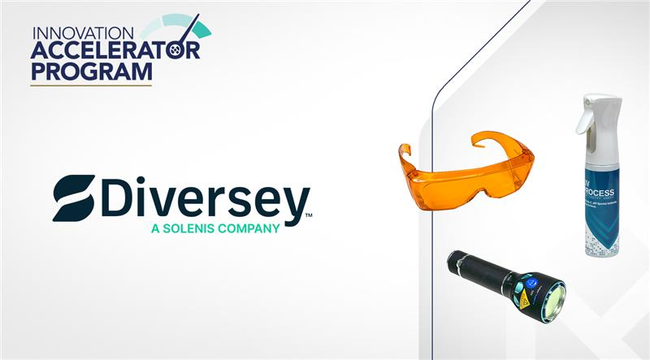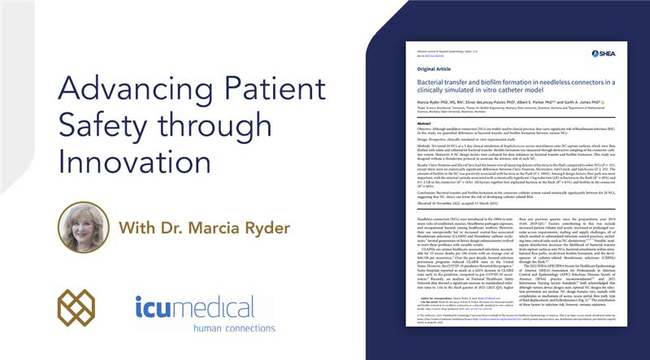HealthPRO Canada News
Supply Chain Forum Live Session: “Views from the Top” Executive Panel

Moderator, Randy Bradley, Associate Professor, Information Systems and Supply Chain Management and Haslam Family Faculty Research Fellow, University of Tennessee, Knoxville, with panelists, Gil Kanner, Vice President, Operations, Pharmalink; Cynthia Valaitis, President and Chief Executive Officer, HealthPRO Procurement Services; Régine Villain, SVP, Supply Chain Network and Chief Supply Chain Officer, Ochsner Health System.
In the midst of the COVID-19 pandemic, supply chains have never been in the headlines more.
“Suddenly, supply chains are sexy,” said Régine Villain, senior vice president of supply chain network and chief supply chain officer at Ochsner Health System. “All of a sudden, leaders have woken up and realized how integral we are to everything that happens in a hospital.”
Villain was one of three executives discussing the current stress on supply chains in healthcare as part of a virtual panel for the Global Supply Chain Institute’s Supply Chain Forum members on April 15, 2020. Gil Kanner of Pharmalink and Cynthia Valaitis of HealthPRO, rounded out the panel moderated by Randy Bradley, an associate professor of information technology and supply chain management at the University of Tennessee, Knoxville’s, Haslam College of Business.
Bradley began the discussion by asking each panelist to outline their business model and the goals they had set for 2020 before the healthcare crisis arose. Their answers set a theme for the day: the stress on the healthcare supply chain has created urgency around the goals and best practices executives have been advocating for years.
Kanner’s goals as vice president of operations centered on ways of maximizing automation to work smarter, which has become more important as so much of his workforce is now working from home. Pharmalink handles returns of out-of-date pharmaceutical materials from more than 14,000 pharmacies, wholesalers, and manufacturers, so employees can provide vital support to healthcare workers without in-person interaction.
A Canadian group purchasing organization, HealthPRO unifies the buying power for more than 1,300 healthcare facilities across Canada with Valaitis serving as president and CEO. She was guiding HealthPRO to help inform government entities about disaggregating volumes putting the marketplace at risk when the pandemic put a spotlight on the issue.
Villain manages the full continuum of supply chain operations for Ochsner Health, Louisiana’s largest non-profit health system. Her goal to solidify and diversify the supply chain took surprising turns in her attempt to find supplies for 40 hospitals and 100 health centers amidst shortages.
“We’ve always talked about how there are particular regions of the world where we tend to store the majority of product, but I think we never understood until recently how heavy our reliance on one location is,” Villain said. “When you follow the breadcrumbs, you might think you have four or five suppliers, but they’re actually being supplied from the same place.”
Valaitis echoed Villain, that the vulnerabilities of transparency and capacity have come into high relief. She pointed out that the efficiencies developed after years of economic prioritization are now creating problems that put health at risk.
“When the chips are down, we create efficiencies that trim capacity, and we need to understand there is a cost to leanness,” Valaitis said. “We make sure we keep at least two suppliers in the marketplace because the cost of not having a drug…you can’t put a price on it.”
Bradley pointed out that this is a trend supply chain experts across all industries have warned about for years.
“As supply chains have become more global, they’ve become longer and thinner,” Bradley said. “We’ve become reliant on this because it’s a way to protect margins, but it’s very fragile. Healthcare isn’t the only one to follow this.”
During the crisis Villain has turned to self-sustainability to stabilize her supply chains and found support in local businesses that diversified to help support healthcare. These emergency suppliers are small but significant relationships she hopes to retain post-crisis.
Villain in particular noted that the crisis fostered the impetus to turn to local suppliers and become more creative in diversifying the supply chain in new ways that will make it permanently stronger.
“We have Mardis Gras costume workers making masks and gowns that rival any others you see in the industry,” Villain said. “Yes, you’re paying a little bit more, but I don’t have to worry about masks and gowns like I did before. Even if it’s just 5 percent, I know I have that in the future.”
Valaitis similarly mentioned turning to gin distilleries that have started making hand sanitizer and noted the surprising ways many local businesses have found to support healthcare organizations and their employees across Canada.
However, she was concerned that some may not be reliable in the long term if they go back to their core business. She also noted that we need to be mindful of how we balance the need to localize supplies with international trade agreements.
All three panelists expressed concern about workers’ welfare, both because of lack of supplies and economic hardships. Kanner noted that even outside hospitals, having the necessary equipment and strategy to protect workers was a key to a more resilient supply chain.
“The proper sanitizing and handling and receiving of product is essential, especially when that product is coming mostly from high-exposure locations like pharmacies and hospitals,” Kanner said. “We’ve tried to do things in the short-term like cross training people in our fulfillment center, but you have to make sure people stay healthy.”
Villain and Valaitis went on to state that assuaging fears and rallying personnel around the common cause—the patient—helps bring focus to their work.
The panelists also talked about how the crisis has proven the efficacy of innovations like remote work and telehealth that bureaucracy previously limited.
“We’re finally moving on things we’ve wanted to move on for a long time,” Valaitis said. “For instance, governments quickly mobilized to enable virtual healthcare by issuing billing codes for physician reimbursement.”
Villain pointed out that beyond virtual visits, the healthcare supply chain has started rearranging itself to provide controlled medical products to patients in their homes, the true end goal of telehealth. Kanner said that the pharmacy industry seemed to be shifting to home delivery as well.
“People are reluctant to go into traditional pharmacies because they know that other people who have been unhealthy have been there,” Kanner said. “They’re finding mail order prescriptions more convenient, which will change some of the organizations we do business with.”
Bradley posed individual questions to each panelist about their unique positions in this crisis as well. Valaitis discussed the viability of a global aggregation entity, which she said would have mitigated price gouging and helped coordinate supplies to hotspots worldwide.
Kanner talked about how a likely surge of hydroxychloroquine production might complicate return refunds if the drug proves ineffective for COVID-19. Villain shed light on how her organization’s rare vision to put a supply chain executive in the C-suite has helped them weather the crisis.
Overall though, the panelists’ experiences in the healthcare industry during a pandemic helped prove truths in supply chain across all industries.
“Cooperation, even between competitors, is going to become more vital if we’re going to build a more resilient supply chain,” Bradley said. “Transparency needs to be built in at various tiers and risk management needs to become a core capability. And that risk management extends to the boots on the ground—protecting and investing in personnel. It starts and ends with the people.”
Article courtesy of the University of Tennessee


